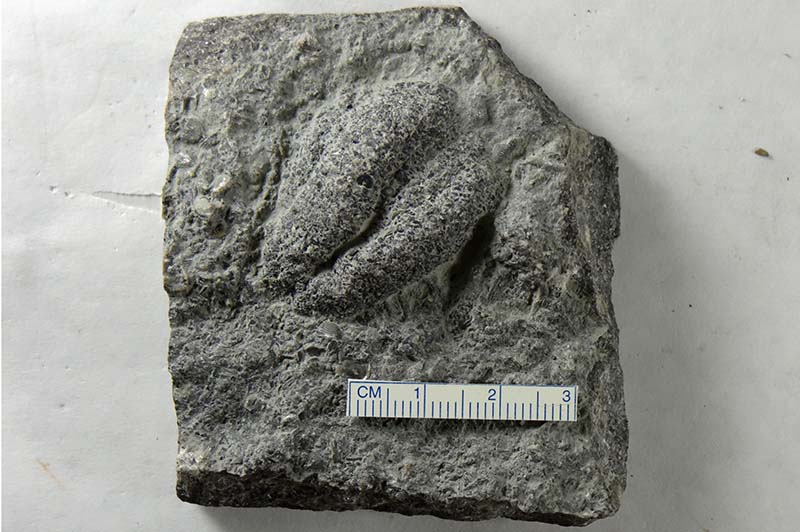Rusophycus Hall, 1852
DESCRIPTION: Small to medium bilobate structures, lobes are parallel or sometimes merged near the posterior. Can be formed like elliptical bulges with tapering to one end; can have furrows. Appear as elongate, shallow to deep pits in concave hyporelief, May have transverse scratch marks on lobes.
BEHAVIOR(S): Cubichnia, praedichnia; evidence of a resting animal; can represent concealment or stationary feeding when in resting position; interpreted as a predatory trace when found superimposed on an endobenthic trace like Planolites or Helminthopsis.
ENVIRONMENTAL SETTINGS: Shallow to deep marine settings, but also reported in fluvial and shallow lacustrine settings.
POSSIBLE TRACEMAKERS: Trilobites (Ediacaran to Permian), starfish, bilateral arthropods and vertebrates, or other nonsessile benthic dwellers, such as arthropods (Permian to recent). Larger specimens could be made by burrowing vertebrates.
GEOLOGIC RANGE: Ediacaran to recent.
ADDITIONAL REFERENCES: Fillion and Pickerill 1990, Pickerill, 1995, Keighley and Pickerill, 1996; Pickerill and Blissett, 2000, Hammersburg et al. 2018.
REMARKS: Scratch marks indicate that the medium was firm or stiff. Reported in Cambrian to Ordovician deep-marine flysch deposits.
